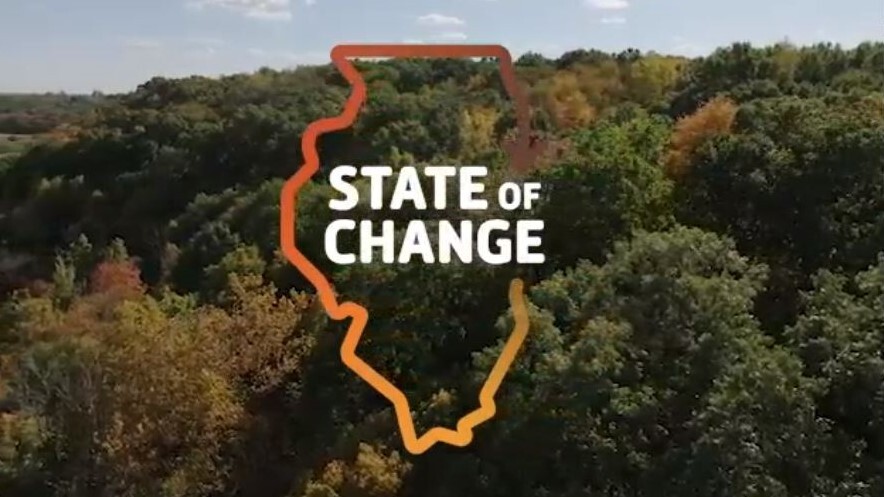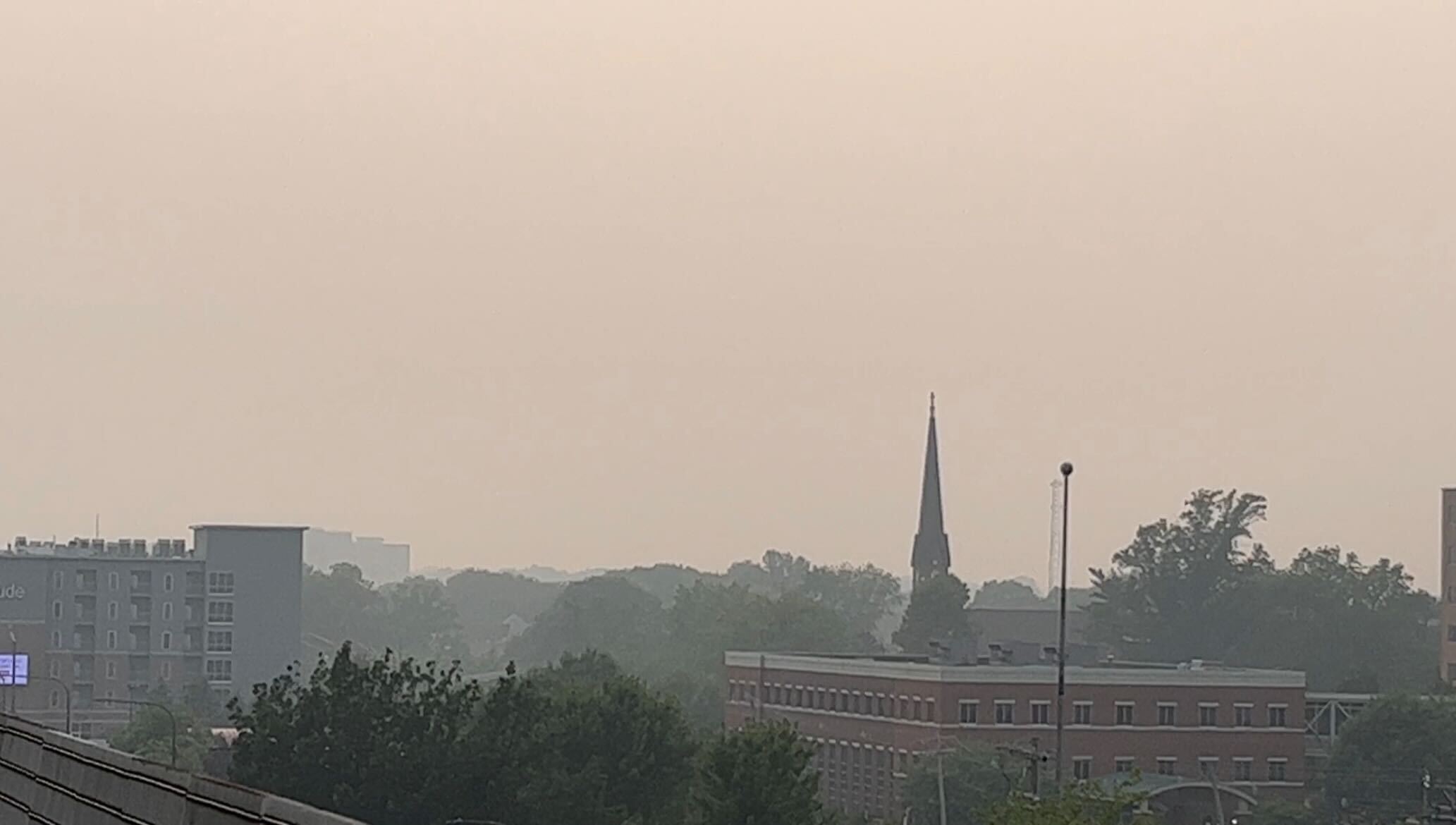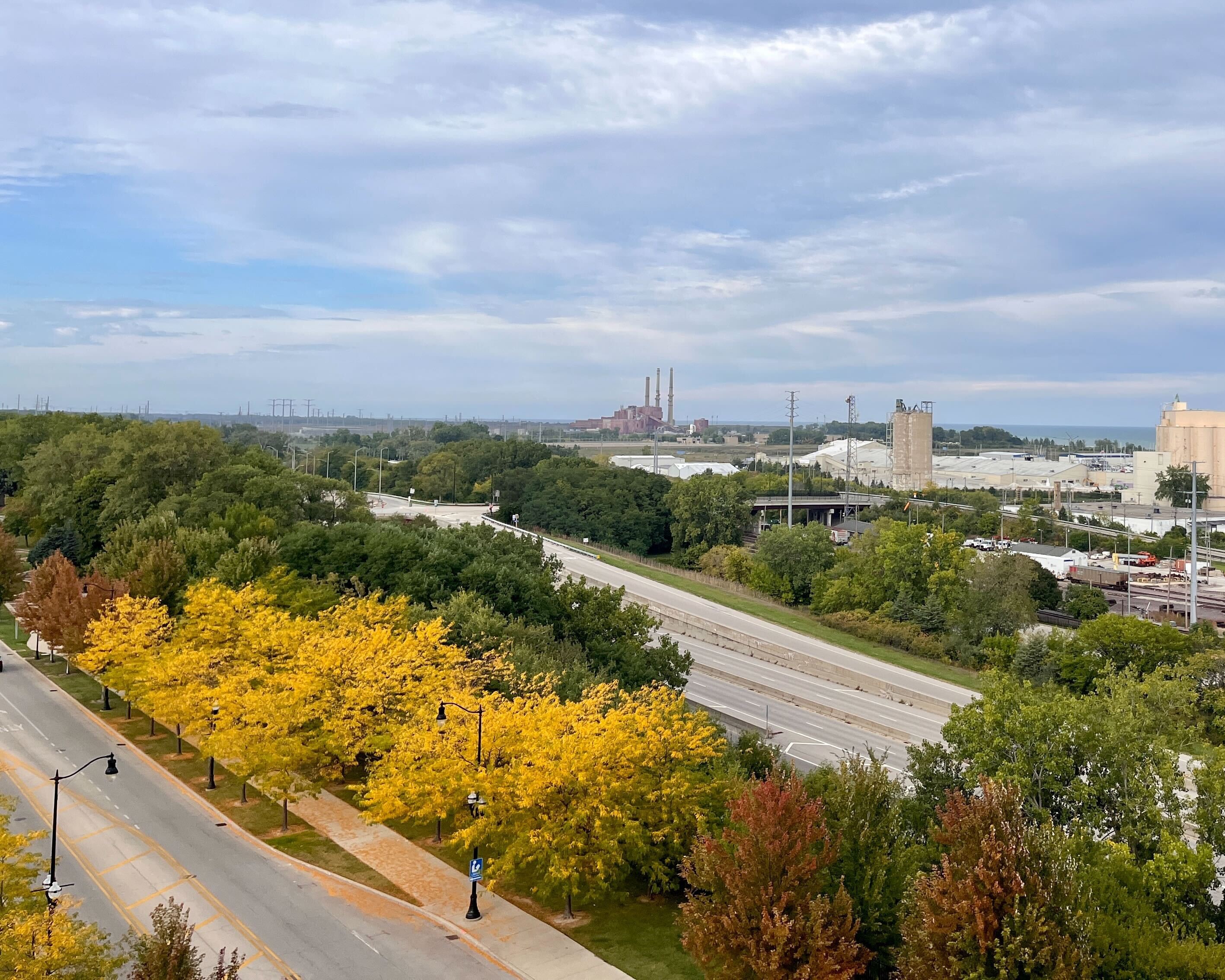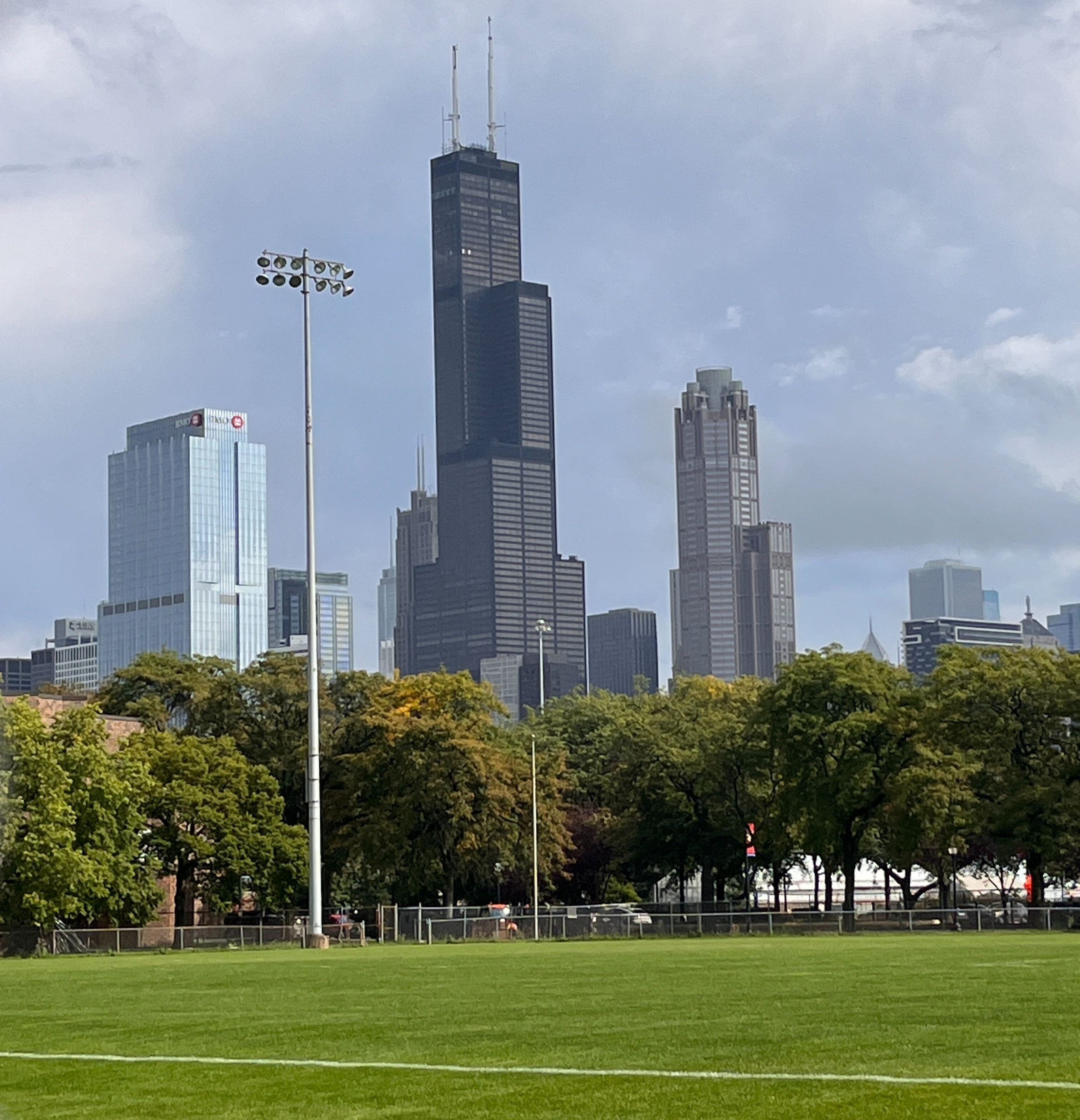Impacts of the climate crisis on communities of color
Table of Contents


In 2023, the climate crisis became chaotic in Illinois. We experienced winter tornadoes in Central Illinois, a dust storm and deadly pileup near Springfield, and a derecho that crossed Illinois with hurricane force winds that cut power to thousands for nearly a week. And then, there was the history-making heat. In our third annual report, we examine how higher temperatures are taking a toll on people as well as the planet. We look at rising concerns about flooding in a community supported by EPA superfund sites. We follow a family through the process of building a net-zero home and ask if they could one day be affordable for all. And we see how communities of color are transforming neighborhoods to add greenspace and forestry.
Illinois is hot
Editor's note: Akintomide Akinsanola was originally incorrectly identified as a researcher with the University of Chicago. He is at the University of Illinois Chicago.
2023 may be known as the year that global warming really got our attention.
In Florida, water temperatures in early summer warmed to the upper 90s. By July, more than 5,000 wildfires burned at least 29 million acres, a size nearly the size of Iowa. Smoke turned skies across America into a grayish, orange haze, even as far as Central Illinois.
Then in August, a heat dome parked on top of the Midwest.
“So a one in 100 year event is becoming more frequent in today's world,” said University of Illinois Chicago Earth and Environmental sciences professor Akintomide Akinsanola, Ph.D. From his native Nigeria to studying in Hong Kong and now in Illinois, Akinsanola has studied climate change. “Most of the extremes or climate weather events can actually be rooted to climate change and global warming.”
The heat and humidity during the week of August 20, 2023, combined for what’s called a heat index or what it feels like when we step outside. Some of the heat indices recorded that week:
- 118 degrees in Rockford.
- 120… a new record in Chicago.
- 122 degrees in Peoria
- 117 in Springfield
- And 124 degrees in the southern Illinois city of Harrisburg.
The heat wave was intense. Schools closed and outdoor workers were sent home, and millions were told to stay inside.
But for many people, especially those living in highly populated areas, there was no escaping the heat thanks to a phenomenon known as urban heat islands. The heat of the day is literally held by buildings, pavement, and other manmade surfaces.
“And studies have shown that when you look at the difference between the urban city and the surrounding environment, the temperature difference can reach maybe 10 degrees Celsius,” said Akinsanola.
Scientists and journalists who are part of the organization Climate Central looked at Chicagoland. On the west side, there’s plenty of greenspace in cities like Downers Grove and Naperville. To the east into downtown Chicago, and especially the loop, it is 9 degrees warmer than the suburbs. Residents took notice.
“It’s a lot easier to get physically exhausted and tired and dehydrated. It makes doing casual day-to-day things a lot more difficult,” said Glam, an uptown Chicago resident.
“I lived in Texas for several years and I knew hot down there, but not like this. I went out to the beach yesterday and I think I almost had heat stroke when I came back,” said another uptown resident Christopher Degard.

Smog over the city of Champaign, Illinois
Photo Credit: Reginald HardwickHeat related illness and deaths are also more common among people of color due to a lack of lack of income, tree cover and resources.
“For example, in your house, if the temperature is too hot, you can switch up the air conditioning to cool the house down. But what about the people that don't have access to that? The most vulnerable of society are highly impacted. With this, and the heatwave, when it gets too intense, you can see an increase in mortality as a result of this. So, it's a very serious concern,” said Akinsanola.
Atmospheric scientists have said that if the world does not curb greenhouse gas emissions by the end of the century, 100-degree days in Illinois summers will be the norm, not the exception. And there’s another result of the higher temperatures: heavier rainfalls.
“Under global warming higher temperature will lead to more moisture in the atmosphere, because the ability of the atmosphere to hold more water vapor increases,” said Akinsanola.
Illinois is one of 33 states with a climate action plan. It includes goals like taking most coal plants offline by 2030 and natural gas plants by 2045, environmental equity, and putting 1-million electric vehicles on the road by the end of the decade. But Akinsanola says Illinois cannot do alone.
“This is not a political statement in terms of research and theoretically, climate is changing. And the evidence is obvious for all to see, we are having increasing activities, especially frequency of extremes,” said Akinsanola.
Connecting heat and health
Diseases and chronic conditions related to pollution and climate change are no longer a threat to Illinoisans, they're a medical reality.
“You see high levels of asthma, high levels of respiratory disease, also, especially in children, you're seeing it,” said Japhia Ramkumar, M.D.
Ramukumar and Holly Rosencranz, M.D., are part of a team of physician researchers at the Carle Illinois College of Medicine at the University of Illinois. They study the link between climate change and human health in real time.
“Allergy season is out of control. People's allergy symptoms are just, you know, tenfold worse, it's lasting longer and It's more severe. And that's because there's higher pollen counts because of warmer temperatures,” said Ramkumar.
“So much of what we do is, is at the bedside, so all of a sudden, you start thinking, you know, ‘I'm gonna give this patient an inhaler, and or two and a couple inhalers for their asthma or their airway disease.’ But maybe we need to talk a bit about what can they do beyond the inhaler… you know, we just talked about what's going on in their homes,” said Rosencranz.
The climate crisis is forcing a change in patient care for future physicians. That means training new doctors to ask questions that could lead to better patient outcomes.
“We need to be asking our patients what is your environment like, what is the tree cover like, what kind of green space do you have around? What’s near you?” said Ramkumar.
“We’ve seen maternal fetal outcomes are impacted by pollution and heat, and a renal disease that isn’t from hypertension or diabetes that’s cause by fluid when people are exposed to heat. There are mental health impacts too. We see higher crime, violence, and domestic abuse when people are overheated,” said Rosencranz.
But, there are things we can do. And it all starts with a seed and soil.
“If our planet ails, we ail. If our planet is sick, we are sick. If we destroy our ecosystems and destroy biodiversity, we are destroying ourselves. And it's all interconnected,” said Ramkumar.
“So, we can plant cooler, you know, we can plant a cooler environment. When you talk about flood effects of the impact of flooding. We can plant spongy cities; we can create sponge cities so that we are reducing that runoff,” said Ramkumar.
How climate change could make Waukegan’s woes worse
Waukegan is one of Illinois’ oldest and most industrialized cities. But the climate crisis threatens to make an evolving danger worse.
Along the blue waters and sandy beaches of Lake Michigan sits the city of Waukegan, midway between Milwaukee and Chicago. The area was known as a trading post in the 1670s. Later, manufacturing took over. In 2023, Waukegan bears the scars of being an industrial hub.
21-year-old Eddie Flores grew up in Waukegan. He’s part of Clean Power Lake County, an environmental justice organization.
“We’ve seen that Black and Brown folks, lower income, lower socioeconomic status groups have been affected by pollution for a really long time,” said Flores. “This shouldn’t be happening to anyone. No community should have to go through increased health concerns due to manufacturing, due to pollution, etc. Frankly, everyone has a right to clean water, clean air, clean land.”
There are five superfund sites designated by the Environmental Protection Agency. These are former factories and landfills so toxic they must be cleaned up by the federal government and private companies. There are two North Shore Gas superfund sites near downtown.

“What you had here was the EPA referred to as non-aqueous liquid dense liquid. Basically, oil and tar pooling up to the surface which is scary to think about,” said Flores.
The Yeoman Creek Landfill is on the city’s northwest side. According to the EPA, it contains liquids with elevated concentrations of metals and ammonia. The area is blocked off by a fence and has many overgrown weeds. It’s also surrounded by apartments.
“It’s literally in people’s backyards. You have the sign right here ‘notice hazardous area, no trespassing.’ But then in other areas, there’s overgrown brush, people can’t see in, they don’t know. In some areas, the fence is compromised so kids can just run around here. They see this huge open field, they want to play around in it,” said Flores.
Asbestos cleanup continues in northeast Waukegan.
Just east of downtown Waukegan, a rusted, old water tower overlooks part of Waukegan Harbor. According to the Department of the Interior, manufacturing plants over decades released a million pounds of chemicals into the harbor’s sediment. The origins of the pollution and why it affects Black and Latino communities go back decades.
Brian McCormack teaches environmental studies at Lake Forest College. He says after the 1940’s, as manufacturing changed, so did the population.
“The superfund sites that are all around us… the worst of the worst of toxic waste sites, things like asbestos, PCBs, known carcinogens. All those things were a product of industrial development in the post World-War Two era,” said McCormack, Ph.D.
“In the decades after that industrial production in the 40’s and 50’s, you start to have white flight. It happens in Chicago. It happens in Waukegan as well. The [white] working classes… tend to move out of city center type areas closer to industrial production. And in their place, you tend to have communities of color take up those residences in close proximity to hazardous sites of industrial production,” said McCormack.
According to the US census, nearly half of Waukegan’s 87,000 residents are Latino. Nearly 20 percent are Black.
Many leaders are trying to educate those communities about a sixth location that is not a superfund site but causing plenty of concern. For decades, the Waukegan Generating Station burned coal along the shores of Lake Michigan. It closed in 2022.
The facility’s owner, Midwest Energy, and its parent company NRG, submitted a plan to the state of Illinois to place a cap over ponds that hold coal ash.
“Removing the coal ash would pose unnecessary safety and environmental risks to the community, create significant traffic disruptions, and could take far longer than closing in place,” said NRG spokesman Dave Schrader in a statement to Illinois Public Media.
“It is 4000 feet from are a major source of drinking water. 6.5 million people depend upon Lake Michigan for their drinking water,” said Illinois State Representative Rita Mayfield (D-Waukegan).
She wants the coal ash removed and relocated. In this era of greater moisture due to climate change, Mayfield says the thought of a flood washing away a barrier between the coal ash ponds and Lake Michigan keeps her up at night.
“Because if the water supply gets poisoned, everyone who gets their water from Lake Michigan along the shoreline down into Chicago, Indiana, Wisconsin, across the lake to Michigan, guess what everybody's water supply is going to be poisoned. And it is going to take generations to clean that up,” said Mayfield.
Mayfield introduced House Bill 1608 in 2023 to do exactly that but so far, it hasn’t passed. She says this issue is bigger than Waukegan.
“I've had opponents say well, your drinking water is fine today. So, what are you saying? You want to wait until the drinking water is poison and then you want to step up and pass lead distillation? No, we want to be proactive. We want to make sure that we are protecting a natural resource,” said Mayfield.
“It’s also a health issue that, you know, we want to move forward. So, ultimately, we want to get rid of not just cap it, get rid of the coal ash, and could take a few years or whatnot but we want to move forward,” said Waukegan Alderman Victor Felix. “I have a brother, you know, he has asthma, you know, and when we go to Mexico, it goes away. But only when we come back here, and only he is back here, does he have those, those symptoms of asthma.”
“In fact, we have residents who live in Waukegan, their life expectancy rate is 15 years less than even residents in in the adjacent communities. And that's an impact. And also, we have a high number of residents with asthma which is directly attributable to the coal ash,” said State Sen. Adriane Johnson.
NRG says independent tests show there is no risk to human health from the ash ponds. And the city of Waukegan’s drinking water consistently meets all water quality guidelines.
In Waukegan, there’s pride about its industrial past and it’s multicultural present. But Flores says it’s equally important to fight for the city’s future.
“I do it for those who are voiceless, for those who can’t. This is a way I can better my community and play my part in trying to combat the health concerns but also climate change,” said Flores.
Black communities adding greenspace

We know being outside in nature has several positive effects on the human body, but did you know planting trees can literally lower crime and improve mental well-being?
When Illinois became a state in 1818, there were just over 14-million acres of forest. Now, roughly 4-million remain. Now, people in Peoria are planting trees to add to that number. And across the state in Danville, a neighborhood is trying to grow by adding greenspace.
Is a net-zero home affordable?
A brand-new eco-friendly house averages about 300-thousand dollars. In this era of increasingly challenging weather conditions, the questions are: what does it take to build a sustainable home? How much do they cost? And who can afford to live net-zero?

